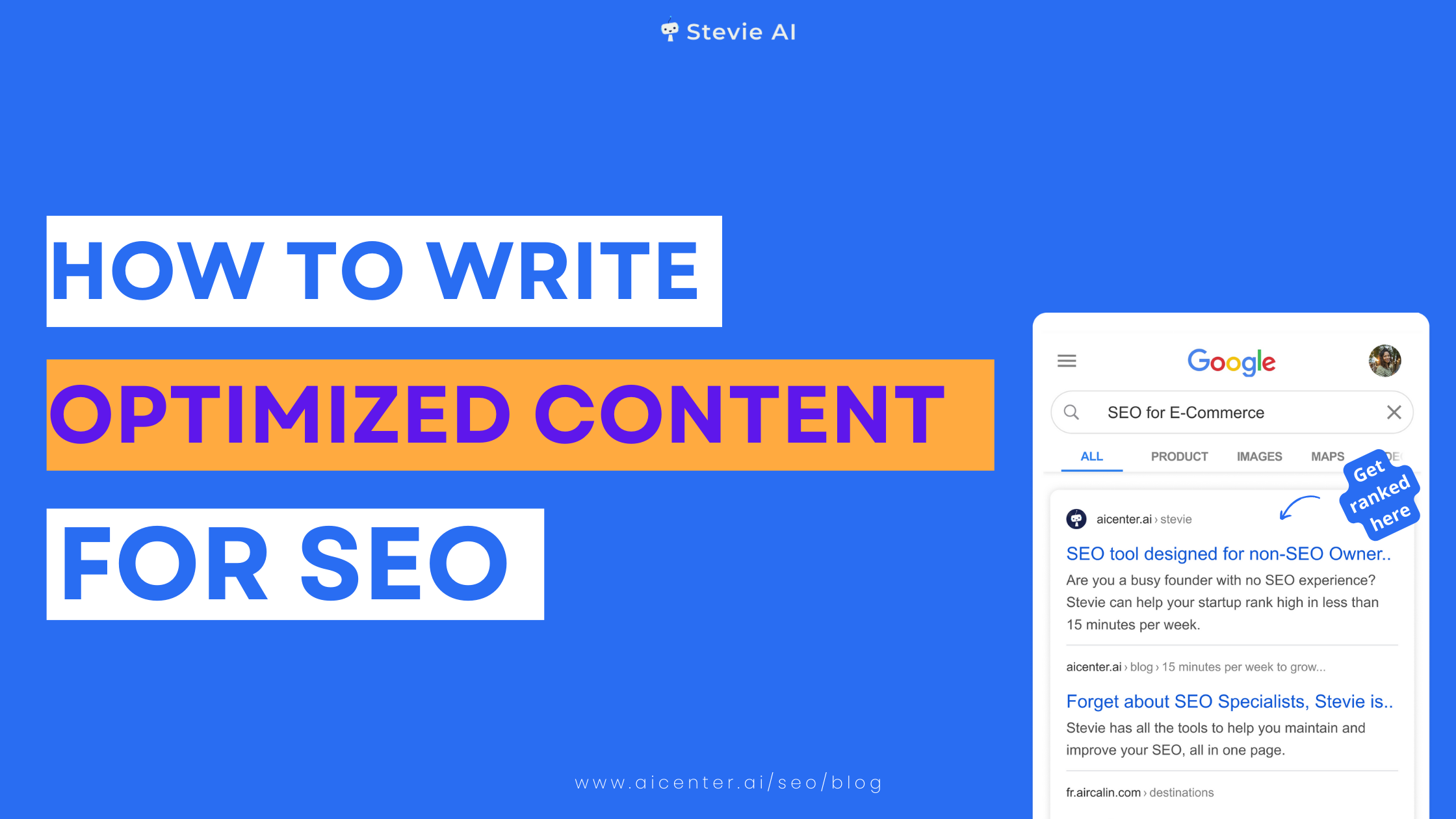
How To Write Optimized Content For SEO in 2025
Writing SEO content is becoming more challenging these days - with Google constantly changing its algorithms and "SEO Gurus" each saying a different method. This blog is to help you, once and for all, to write optimized SEO blogs - without any prior SEO experience.
For small business owners, SEO is a daunting task that often feels nearly impossible without hiring agencies or specialists. Believe it or not, outside of your site health, the most (and some might say “only”) important part of your SEO strategy is writing SEO-friendly content. If you don’t have content, Google has nothing to rank you for—more content = more exposure = more traffic. This blog will show you how to write optimized content without needing a specialist.
## What is Considered “Optimized” SEO Content?
Contrary to conventional wisdom, the essence of Search Engine Optimization is NOT about thinking, “This is what Google wants me to do,” or “This is what the algorithm says.” It’s all about the readers. Google’s job is to ensure that the content it surfaces provides searchers with the information they’re looking for—nothing more, nothing less. This means you need to write content that users will actually read and that answers their queries effectively, preventing them from searching again for the same answers.
Without further delay, let’s dive into the step-by-step guide to writing amazing content that both your readers and Google will love.
## Find the Right Keywords
As the name suggests, a “keyword” is a short phrase (e.g., "Jeans for Winter") or simple word (e.g., "Black Jeans") that people use to search on Google. Targeting the right keywords ensures that if your content starts ranking, it becomes the answer/website people are searching for in the first place. You can incorporate these keywords into your website text, product pages, or blogs/articles. Finding the right keywords for SEO requires three key metrics:
1. High Search Volume
You don’t want to write a blog for a term only five people search for each month.
2. Low Difficulty
It’s nearly impossible to rank for a keyword dominated by big brands.
3. Intent
Tailor your content to the searcher's intent: provide informational content for question-based keywords, product recommendations for purchase-based keywords, etc.
## How to Find SEO Keywords
To discover a keyword goldmine, follow these steps:
1. Go to Stevie AI’s Keyword Research Tool.
2. Enter your URL and a competitor’s URL (this will provide keywords your competitor is ranking for).
3. Input a few keywords (e.g., the products you are selling).
4. Click Generate.
The result will be a simple list. Unlike other tools like Ahrefs or SEMrush, Stevie AI does the heavy lifting for you. The tool filters the results, leaving you with keywords that meet the criteria of high search volume, low difficulty, and clear intent. You can simply pick one and get started. To find more keywords, add more competitors and rerun the task.
## Where to Put the SEO Keywords
Once you have your keywords, you have three options:
1. **Integrate them into existing pages.**
Adding keywords to existing content won’t hurt your current traffic (unless you replace well-performing existing keywords). Use Stevie AI’s “Domain Keyword List” task to identify which keywords are working well before making changes. Then, simply insert the new keyword where it fits naturally.
2. **Create new pages (landing pages).**
While this option allows for focused content, it’s more challenging as you’ll need to write entirely new website copy. Stevie AI’s “New Landing Page” task can help by generating text for your new template.
3. **Write blogs/articles.**
Blogging is one of the most effective ways to grow visibility and use keywords. We’ll discuss choosing topics and writing blogs in the next section.
## How to Write an SEO-Optimized Blog
After identifying your keywords, follow these steps:
1. Click the **Generate** button to access the “Blog Idea” page.
2. Click **Generate** again to see 4–5 blog ideas inspired by the highest-ranking blogs for that keyword. Don’t reinvent the wheel—use what works!
3. Edit the outlines and summaries to suit your needs, or click **Generate** again for more ideas.
Your blog will be ready in no time.
If you prefer to write a blog from scratch, consider these tips:
- **Catchy headlines:** Encourage readers to click, much like on YouTube.
Example: *5 Colors You Can Match with a Brown Polo Shirt*
- **Graphs and images:** Visuals break up text and make blogs more engaging.
Example: See the images in this blog for reference.
- **In-depth content:** Provide detailed answers; surface-level content drives readers elsewhere.
Example: Include step-by-step guides or tutorials.
- **Call-to-action (CTA):** Add buttons or backlinks to your site/products without overwhelming readers.
Example: *Test your website quality here.*
## How Does Google Rank My Blog?
Google uses the E-E-A-T framework:
1. **Experience:** Share personal or third-party experiences related to the topic.
2. **Expertise:** Support your content with credible sources, data, and visuals (graphs, numbers, citations).
3. **Authority:** Build authority by consistently delivering valuable, trustworthy content.
4. **Trustworthiness:** Include contact information, social links, and ways for readers to connect with you.
## Key Takeaways
To optimize your SEO content:
- Focus on your readers, not just Google.
- Find the right keywords.
- Choose a good blog topic.
- Write appealing, in-depth content with visuals and CTAs.



